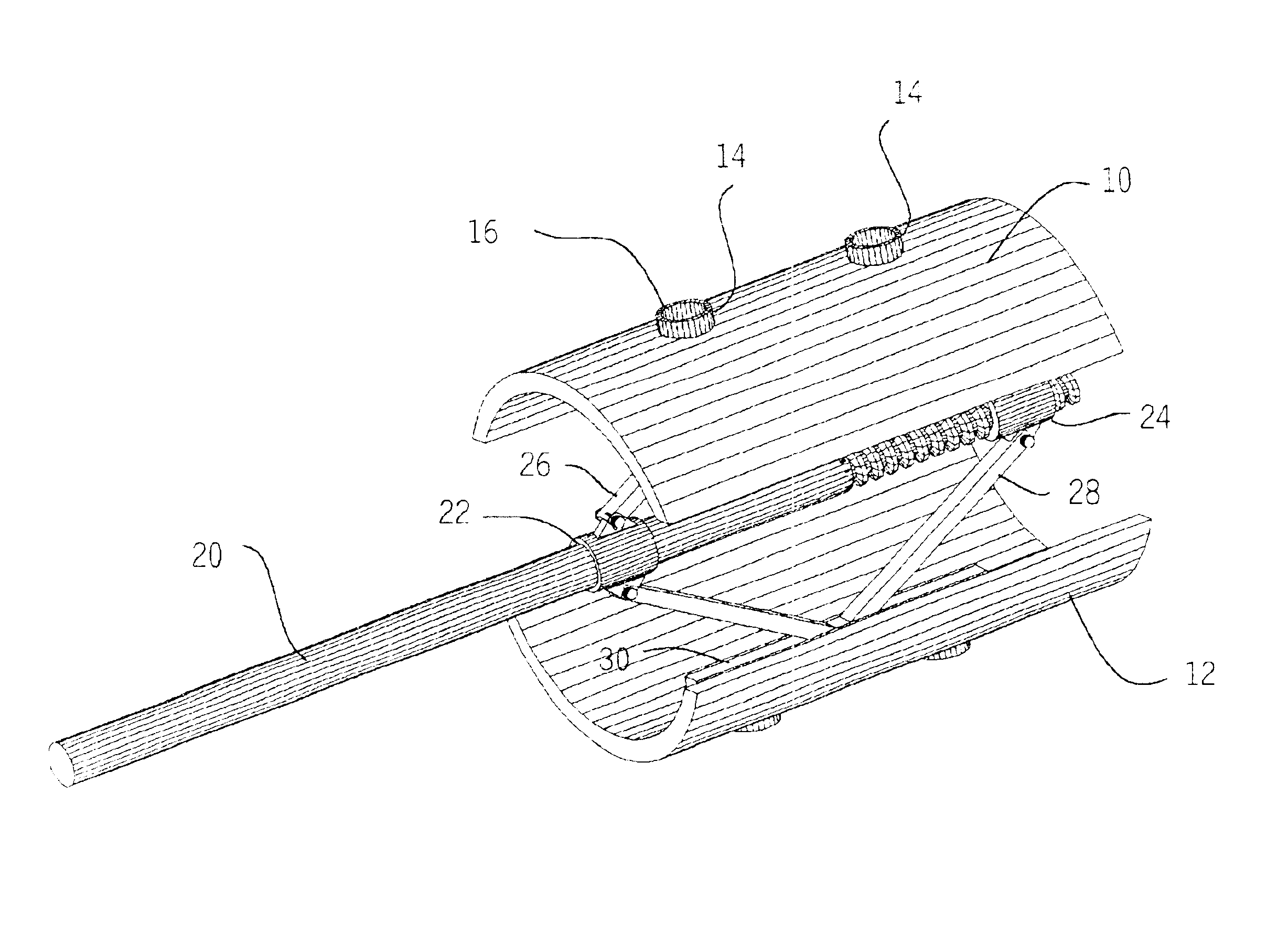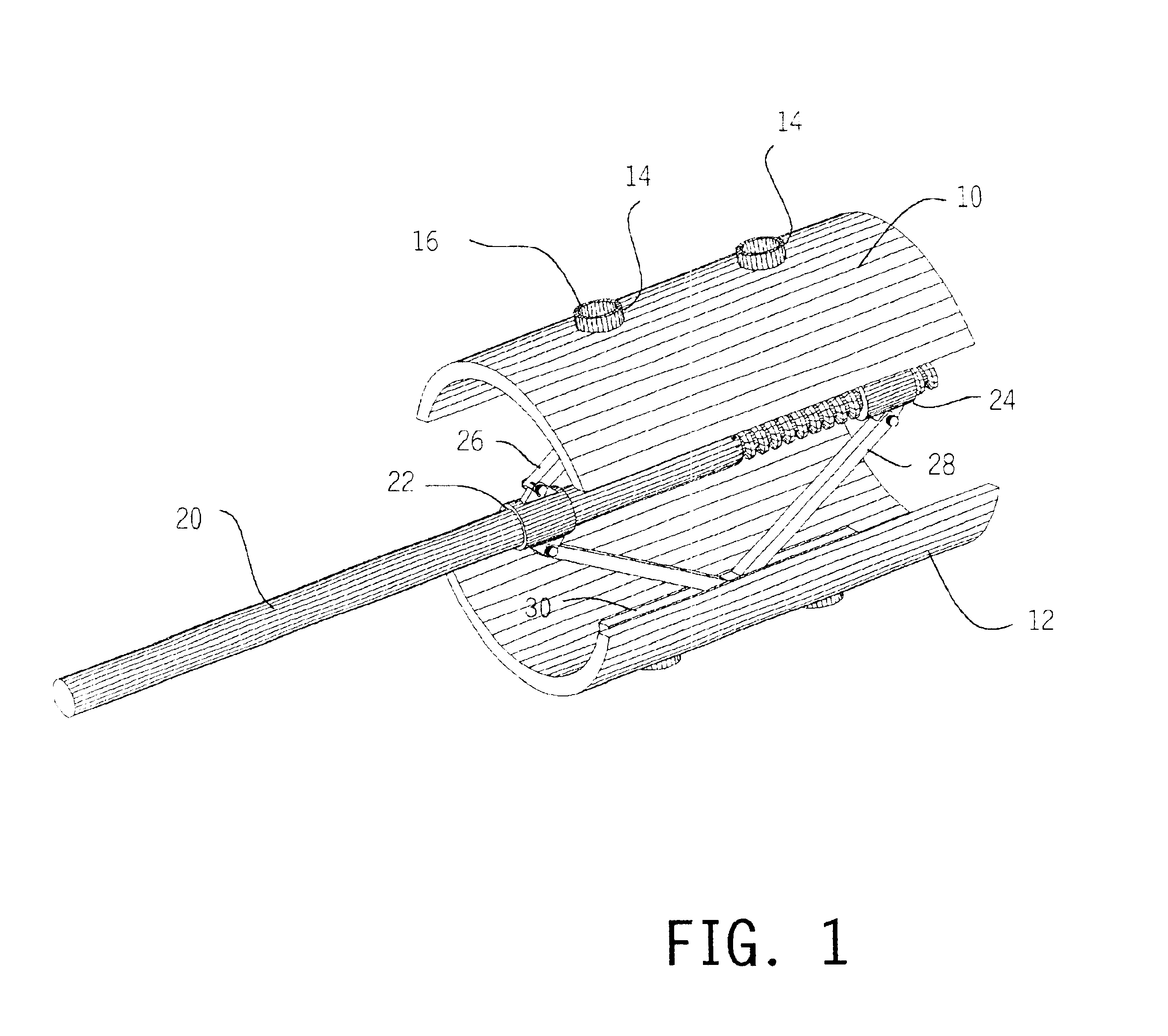Vertebral body end plate cutter
a technology of end plate cutter and vertebral body, which is applied in the field of vertebral body end plate cutter, can solve the problems of not having the capacity to adequately stabilize the spine, not having initial strength, and contributing to varying degrees of spinal instability, etc., and achieves the effects of simple manufacturing, simple use, and convenient vertebral interbody fusion
- Summary
- Abstract
- Description
- Claims
- Application Information
AI Technical Summary
Benefits of technology
Problems solved by technology
Method used
Image
Examples
Embodiment Construction
)
An end plate cutting tool suited for intervertebral fusion techniques includes at least two relatively movable elements such as the shells 10, 12 shown in FIGS. 1-3. Each of the shells has at least one (two in FIG. 1, one in FIG. 2) cutting structure 14 on its outer surface. In FIGS. 1 and 2, the cutting structure is a flange or band having a cutting edge 16 conforming in shape and location to bone growth apertures in cranial and caudal portions of a selected interbody fusion prosthesis 32 (shown in partial section in FIG. 4a).
The cutting structure 14 should be able to protrude 3-5 mm beyond the outer surface of the prosthesis, which has a wall thickness of 0.25-2.5 mm. So the design height of the cutting structure depends on the wall thickness of the prosthesis with which it is intended to be used.
The shells are supported on a jack screw mechanism including a shaft 20 threaded at its distal end, a fixed collar 22 seated in a groove knot shown) on the shaft, a traveling nut 24 enga...
PUM
 Login to View More
Login to View More Abstract
Description
Claims
Application Information
 Login to View More
Login to View More - R&D
- Intellectual Property
- Life Sciences
- Materials
- Tech Scout
- Unparalleled Data Quality
- Higher Quality Content
- 60% Fewer Hallucinations
Browse by: Latest US Patents, China's latest patents, Technical Efficacy Thesaurus, Application Domain, Technology Topic, Popular Technical Reports.
© 2025 PatSnap. All rights reserved.Legal|Privacy policy|Modern Slavery Act Transparency Statement|Sitemap|About US| Contact US: help@patsnap.com



